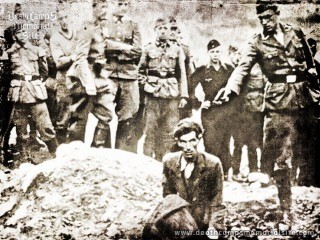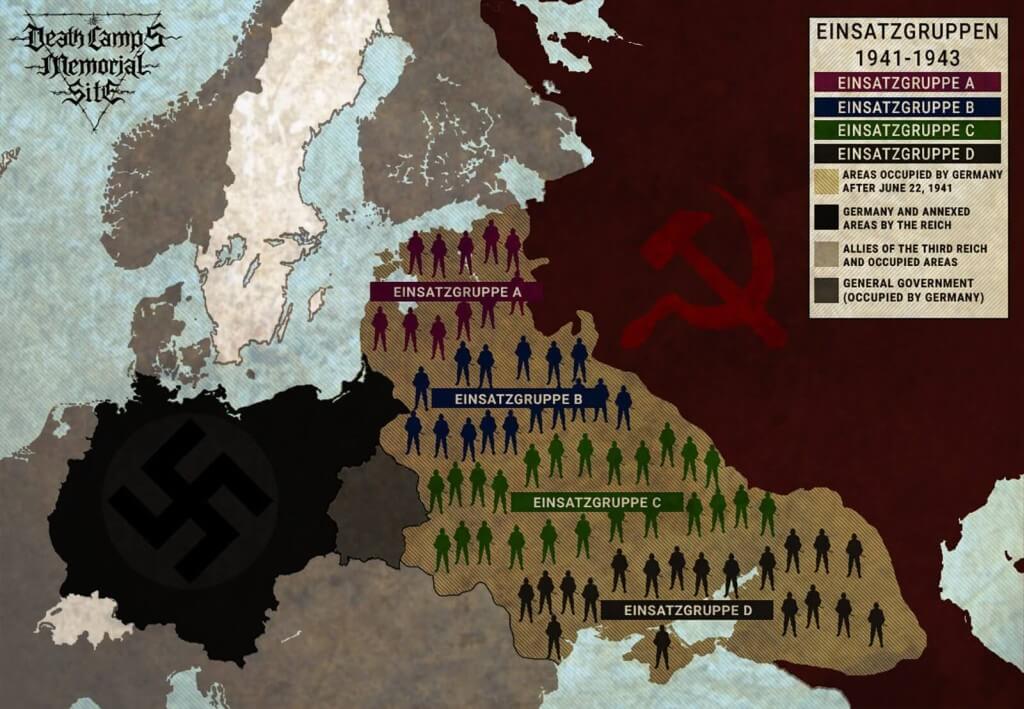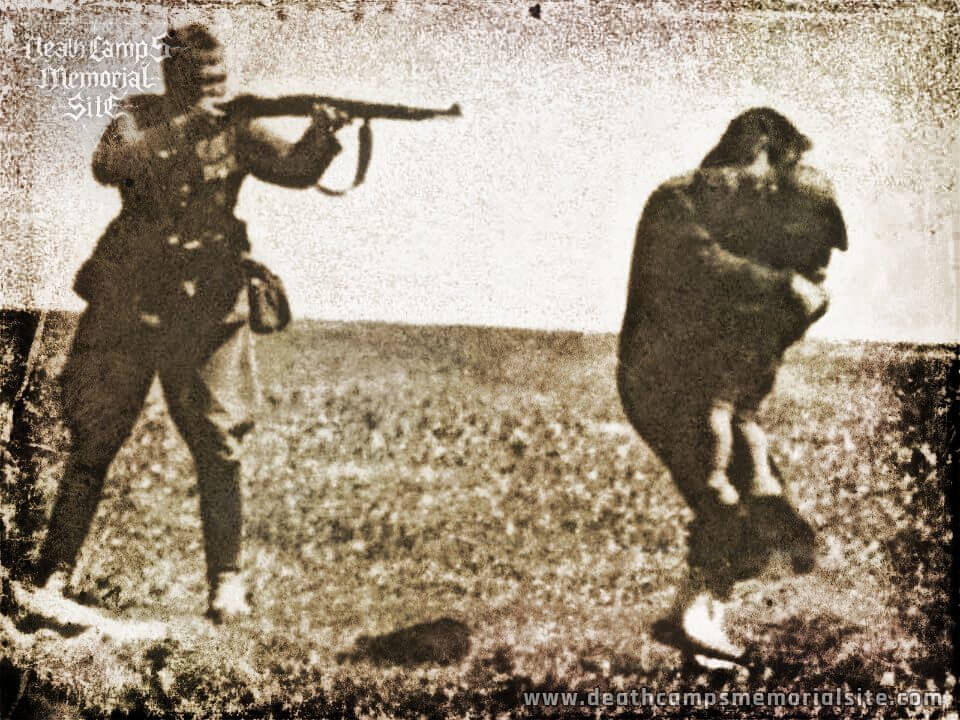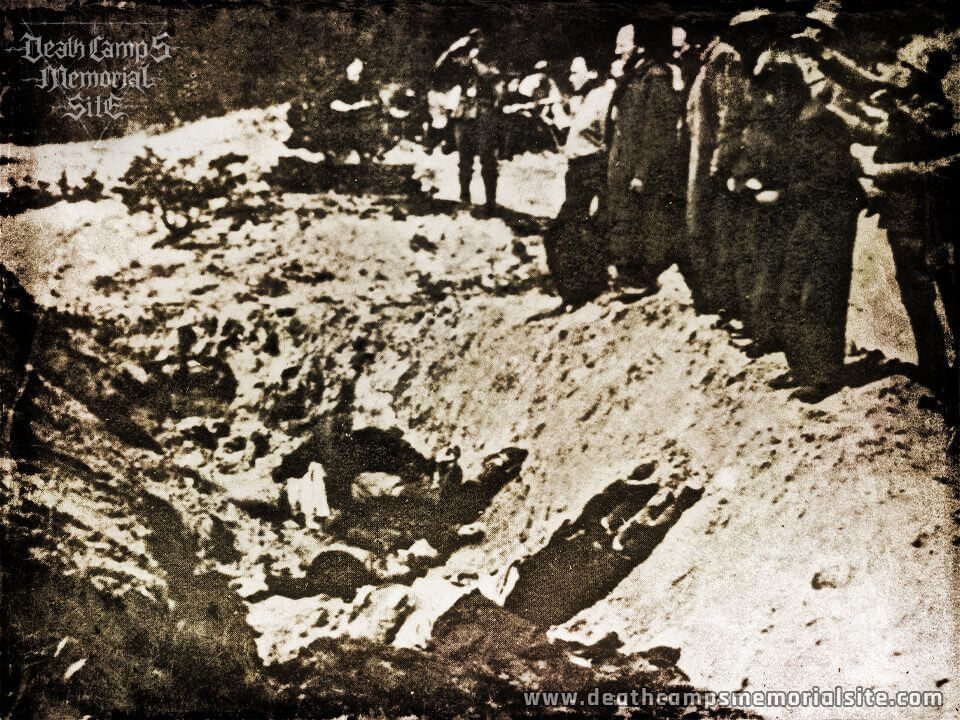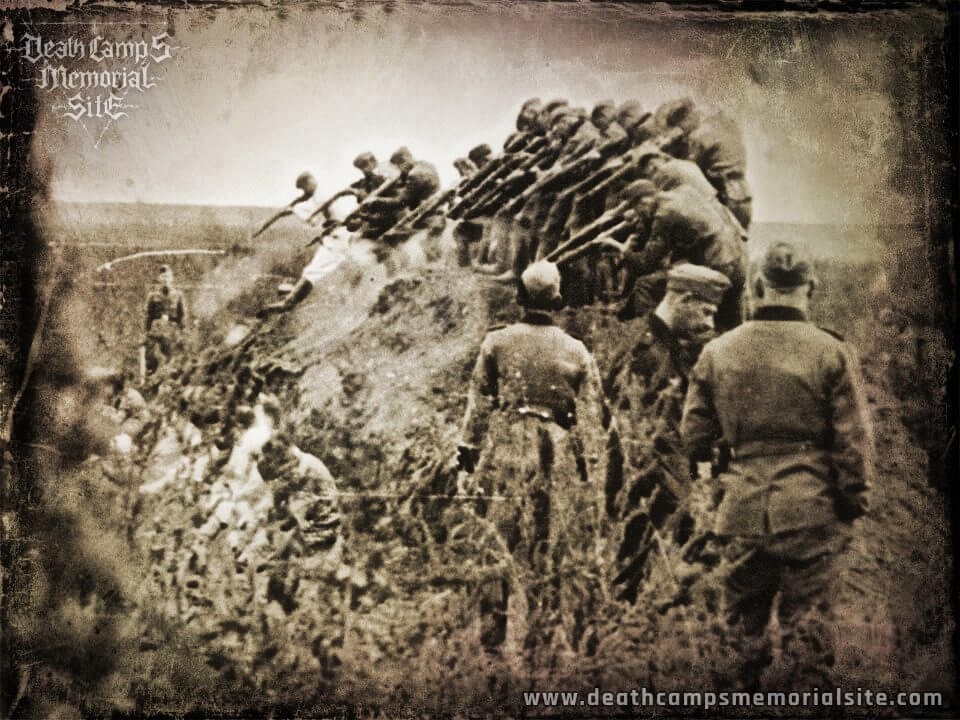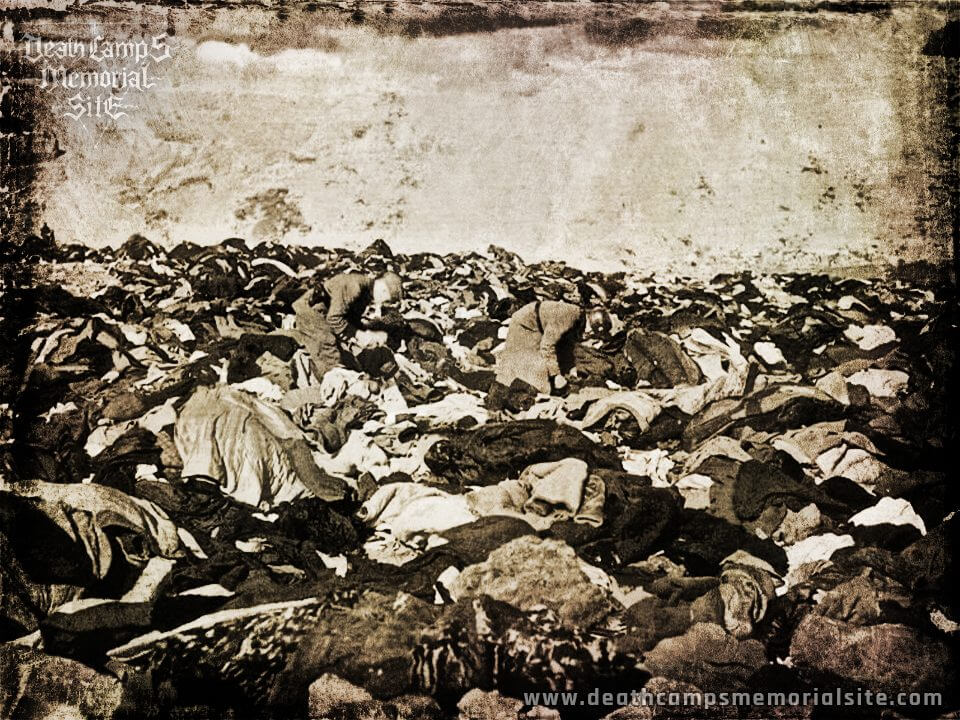Einsatzgruppen - Nazi Death Squads
Please read the most important facts and data about the Einsatzgruppen; The section is being expanded, new materials will be uploaded successively.
Einsatzgruppen (German units separated from SIPO and SD) - special operational groups moving behind the front line, created by the Reich Security Main Office (RSHA) on the orders of Reinhard Heydrich. It is estimated that at least 900,000 people died at the hands of the Einsatzgruppen torturers, and according to some sources* this number could even reach 1,500,000 - 2,000,000. [*] (The United States Holocaust Memorial Museum)
The task of the Special Operational Units of the Security Police was to combat all elements who were hostile towards the Reich and anti-German. They operated in the enemy's country behind the fighting troops. Other tasks of the Einsatzgruppen were: to secure industrial plants, more important municipal and strategic facilities and reserves of raw materials. In history, however, they will generally be remembered as units which committed mass genocide in Eastern Europe in 1941-1943.
The Beginnings of the Activity of Einsatzgruppen
The first unit of this type was the Einsatzkommando Österreich, created in 1938 under the command of prof. Dr. Franz Six. This unit operated in Austria during the annexation of these lands to the Third Reich. In October 1938, new groups were formed: Einsatzgruppe Dresden, under the command of Heinz Jost, and Einsatzgruppe Wien, led by Dr. Franz Stahlecker.
The next groups of this type were established in Czechoslovakia in March 1938 and these were the following groups: Einsatzgruppe I Prag (Prague), Einsatzgruppe II Brünn (Brno), Einsatzkommando 9 Mies (Stříbro), Sonderkommando Pilsen (Pilzno).
Activity Of Einsatzgruppen In The Years 1939 - 1941 In The Occupied Polish Territory
In July 1939, five operational groups Einsatzgruppen I/II/III/IV/V were created which began operations in September 1939. At that time, three more groups were created, including Einsatzgruppe VI, Einsatzgruppe "z.b.V." and Einsatzkommando 16 - "special purpose" groups which were directed to Silesia, Greater Poland and Pomerania.
The death squads committed crimes against Poles through mass executions, including in fordońska "Death Valley", Piaśnica, Kórnik and Warsaw. The operational groups also took part in: Operation Tannenberg, executions in parliamentary gardens and the elimination of Polish intelligentsia - "Intelligenzaktion". According to research carried out, among others, by the Institute of National Remembrance, Einsatzgruppen units are responsible for the death of about 200,000 people in the area of occupied Poland.
Activity Of Einsatzgruppen In 1941-1944 In Eastern Europe
After the invasion of the USSR by German troops in 1941, the main task of the Einsatzgruppen became the mass extermination of Jews, communists, Roma, Soviet prisoners of war and the enemies of the system among the civilian population (including partisans). The Einsatzgruppen units carried out these tasks mainly through mass shootings, as well as hanging and gassing in specially constructed trucks (Gas Van).
Due to their size and areas of operation, the divisions were appropriately divided into four operational groups: Einsatzgruppe A/B/C/D. Local collaborators - police officers, officials and ordinary citizens also participated in the pogroms of Jews, communists, and other enemies of the Third Reich. It happened that Wehrmacht and Waffen SS units supported Einsatzgruppen. In the vicinity of Odessa, apart from Einsatzgruppe "D", Romanian and Ukrainian troops also carried out mass murders.
People were murdered in the entire occupied area, but the most notorious crimes were committed in the following places: Babi Yar (Kiev), Kharkov, Kamieniec Podolski, Kostopol, Kaunas, Lviv, Lutsk, Odessa, Ponary (Vilnius), Rovno, Rumbula (Riga)
Areas of activity of individual operational groups. [map by Paweł Krupiński]
Einsatzgruppen - structure • commanders • information
Einsatzgruppe A
Einsatzgruppe A
Commanders
(1941-1942)
Heinz Jost
(1942)
Humbert Achamer-Pifrader
(1942-1943)
Friedrich Panzinger
(1943-1944)
Wilhelm Fuchs
(1944)
Einsatzgruppe A
Organizational structure
| Einsatzkommando 1b |
| Einsatzkommando 1c |
| Einsatzkommando 2 |
| Einsatzkommando 3 |
| Einsatzkommando Tilsit |
| Sonderkommando 1a |
| Sonderkommando 1b |
| Sonderkommando 2 |
Einsatzgruppe A
Information
Einsatzgruppe "A" - was active by the Army Group "North" and in the area of the Baltic republics.
Einsatzgruppe B
Einsatzgruppe B
Commanders
(1941)
Erich Naumann
(1941-1943)
Horst Böhme
(1943)
Erich Ehrlinger
(1943-1944)
Heinrich Otto Seetzen
(1944)
Horst Böhme
(1944)
Einsatzgruppe B
Organizational structure
| Einsatzkommando 1b |
| Einsatzkommando 1c |
| Einsatzkommando 2 |
| Einsatzkommando 3 |
| Vorkkommando Moskwa |
| Sonderkommando 7a |
| Sonderkommando 7b |
Einsatzgruppe B
Information
Einsatzgruppe "B" - was active by the Army Group "Center" and in Belarus
Einsatzgruppe C
Einsatzgruppe C
Commanders
(1941)
Max Thomas
(1941-1943)
Horst Böhme
(1944)
Einsatzgruppe C
Organizational structure
| Einsatzkommando 5 |
| Einsatzkommando 6 |
| Sonderkommando 4a |
| Sonderkommando 4b |
Einsatzgruppe C
Information
Einsatzgruppe "C" - was active by the Army Group "South" and in the Ukraine
Einsatzgruppe D
Einsatzgruppe D
Commanders
(1941-1942)
Walther Bierkamp
(1942-1943)
Einsatzgruppe D
Organizational structure
| Einsatzkommando 11a |
| Einsatzkommando 12 |
| Sonderkommando 10a |
| Sonderkommando 10b |
| Sonderkommando 11a |
| Sonderkommando 11b |
| Sonderkommando Astrachan |
Einsatzgruppe D
Information
Einsatzgruppe "D" - it was active by the 11th Army of General Schobert which operated within the Romanian Army Group "Antonescu" and in Bessarabia, the Ukraine and Crimea.
Einsatzgruppen Trials
On September 29, 1947, trial number 9 regarding the activities of the Einsatzgruppen began in Nuremberg. A total of 24 people were accused, including Otto Rasch (commander of Einsatzgruppen C), withdrawn from the trial for health reasons - he died on November 1, 1948. The military tribunal was headed by Michael Mussmano, and the chief prosecutor was Telford Taylor with his assistants - James Mac Haney, Benjamin Ferenez, James Heath.
The trial ended on April 10, 1948, and 22 commanders of groups and subgroups were convicted of their criminal activities in Einsatzgruppen. 14 people were sentenced to death, but only 4 were executed. The rest of the sentences were later changed into life sentences or long imprisonment. Among the 24 accused, 11 held at least a doctoral degree. As a result of leniency, all prisoners were released by 1960.
Executed death penalty: Otto Ohlendorf, Erick Naumann, Paul Blobel, Werner Braune;
The death penalty imposed and changed to life imprisonment: Ernst Biberstein, Walter Haensch, Mathias Sandberger, Adolf Ott, Waldemar Klingelhofer
The death penalty was imposed and changed to: 25 years imprisonment - Walther Blume, 20 years imprisonment - Eugen Steimbert, 15 years imprisonment - Wili Seibert, 10 years imprisonment - Heinz Schubert
Eduard Strauch - was handed over to the Belgian authorities, where he was sentenced to death, but died before executing the sentence;
Emil Haussmann - committed suicide before the sentence was executed;
Mathias Graf - Einsatzkommando 6 officer. He was the only one who was not arrested after the trial (the period of being arrested was included in the sentence).
Related Articles:
- The massacre in Babi Yar - 33,771 victims of the "Squadrons of Death"
- Mass murder in Kaunas. July 6, 1941
- The impact of Operation Barbarossa on the emergence of mass extermination centers
- Action-1005 destroying evidence of crime
- Gas Van - mobile gas chambers
- Before the extermination camps - "Einsatzgruppen"
- Reinhard Heydrich - "Holocaust Architect"
Archival Photos
Archival photos - public domain. If copyright has been violated, please contact me. The photos have been added for information, not for profit or for surreptitious advertising.
